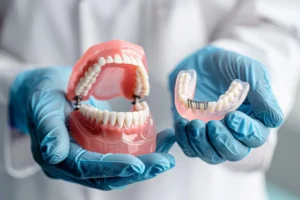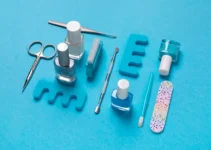Understanding the various types of dentures available can significantly impact your dental health and comfort. Many people face the need for dentures due to tooth loss from decay, injury, or periodontal disease. Dentures not only restore the appearance of a natural smile but also improve chewing ability and provide support for facial muscles. From complete to partial, immediate to custom dentures, each type offers specific benefits and challenges. By getting to know the options, you can work closely with your dental care provider to choose the best solution tailored to your needs and lifestyle.
Traditional Dentures
For many years, traditional dentures have been the go-to solution for individuals looking to restore their smiles and regain functionality after tooth loss. These prosthetic devices are designed to replace missing teeth and provide support to the facial muscles, thus enhancing both aesthetics and oral health. Although dental implants have become increasingly popular, traditional dentures remain a viable alternative for many patients due to their affordability and non-invasive nature.
Modern advancements in dentistry have led to significant improvements in the design and comfort of traditional dentures. Customizable and adaptable, these appliances are made from durable materials, ensuring a long-lasting solution for tooth replacement. While they may not have the same stability as dental implants, traditional dentures offer a reliable option for those unable to undergo implant surgery or seeking a more cost-effective treatment.
Full Dentures
Full dentures are designed to replace an entire arch of missing teeth, whether it be the upper or lower jaw. These devices consist of a flesh-colored acrylic base that sits over the gums, with the artificial teeth attached to this base. Typically, full dentures are custom-made to fit the patient’s mouth, ensuring optimal comfort and functionality.
One of the primary benefits of full dentures is their ability to restore the patient’s ability to chew and speak effectively. By replacing all the teeth in the arch, they help to maintain the structure of the face, preventing the sunken appearance that often accompanies tooth loss. Additionally, full dentures can be removed for cleaning and maintenance, providing a practical and hygienic solution for oral care.
While they offer numerous advantages, full dentures may require a period of adjustment, as the patient gets used to wearing them. Over time, the fit of the dentures may also change due to natural changes in the jawbone and gum tissues, necessitating periodic adjustments or replacements to ensure a secure and comfortable fit.
Partial Dentures
Unlike full dentures, partial dentures are intended for patients who are missing only a few teeth within an arch. These prostheses are designed to fill the gaps left by missing teeth, preventing the remaining natural teeth from shifting and maintaining proper alignment. Partial dentures typically consist of artificial teeth attached to a metal or acrylic framework that anchors them in place.
A significant advantage of partial dentures is their ability to restore function and aesthetics without the need for significantly altering the remaining natural teeth. They provide a stable and secure solution for patients who may not be suitable candidates for dental implants or who prefer a less invasive option.
To ensure the best fit and function, partial dentures are custom-made to align with the patient’s existing teeth and mouth structure. They are usually held in place by metal clasps that attach to the natural teeth, but more advanced options such as precision attachments can offer a more discreet and secure fit.
Just like full dentures, partial dentures require proper care and maintenance to ensure their longevity and effectiveness. Regular dental check-ups and good oral hygiene practices are essential to keep the gums and remaining teeth healthy, as well as to ensure the dentures remain in good condition.
By understanding the different types of traditional dentures and their specific applications, patients can make more informed decisions about their oral health. For more detailed information on alternative treatments and the latest advancements in dental technology, consider exploring our other articles.
Modern Denture Options
In the evolving world of dentistry, modern denture options have significantly advanced, offering patients more comfortable and aesthetically pleasing solutions. Traditional dentures, while still used, are often less preferred due to their discomfort and instability. Innovations in dental implants and prosthetic design have led to the development of a variety of denture types that cater to different needs and preferences.
Understanding the different types of dentures available can help in selecting the most suitable option for each patient. Three main types include implant-supported dentures, snap-in dentures, and overdentures. Each of these has unique features, advantages, and potential limitations. Let’s explore each type in detail.
Implant-Supported Dentures
Implant-supported dentures are a revolutionary solution for edentulous patients. Unlike traditional dentures that rest on the gums, these dentures are anchored to dental implants embedded in the jawbone. The implants provide a secure and stable foundation, significantly increasing the denture’s stability and functionality.
One of the main benefits of implant-supported dentures is their ability to prevent bone loss. Dental implants stimulate the jawbone similarly to natural tooth roots, promoting bone health and preventing the shrinkage that typically occurs with traditional dentures.
Studies have shown that patients with implant-supported dentures experience a higher quality of life. They report better chewing efficiency, improved speech, and enhanced confidence. This type of denture is particularly beneficial for patients who have sufficient bone density to support the implants.
Snap-In Dentures
Snap-in dentures are another popular option for patients seeking a more secure and comfortable denture. These dentures “snap” onto implants or specialized attachments, providing a firm hold that prevents slippage and movement during eating or speaking.
One of the advantages of snap-in dentures is that they are removable, allowing for easier cleaning and maintenance compared to permanent implant-supported options. This flexibility can be particularly appealing to patients who prefer the convenience of a removable appliance but still seek the stability provided by implants. These dentures can significantly improve a patient’s lifestyle by offering a compromise between traditional dentures and fixed implant-supported solutions. They are often recommended for patients who have moderate bone resorption and may not be ideal candidates for more extensive implant procedures.
Overdentures
Overdentures are designed to fit over the remaining natural teeth or dental implants. When natural teeth are used, they are typically prepared to serve as support pillars or abutments for the overdenture. These teeth can provide additional stability and retention compared to full dentures.
For patients with few remaining teeth, overdentures can be an excellent choice as they help preserve the natural dentition and prevent further bone loss. When implants are used to support overdentures, they offer the same benefits in terms of stability and bone preservation as implant-supported and snap-in dentures.
A significant advantage of overdentures is their ability to improve chewing function and comfort. They also tend to look more natural, helping patients feel more confident in their smile and overall appearance. This option is particularly suitable for patients who prefer a blend of natural teeth and prosthetic support.
In conclusion, choosing the correct type of modern denture involves understanding the specific needs and conditions of each patient. For more in-depth information about dental implants and other advanced dental solutions, explore our other articles on this topic.
Material Choices for Dentures
The choice of material for dentures is a crucial aspect that influences not only the functionality but also the aesthetics and longevity of dental prosthetics. Each material offers unique advantages and potential drawbacks, making it essential to select the most appropriate type for each clinical situation. In this article, we will explore the various materials used in dentures, focusing on acrylic, ceramic, and porcelain options.
Understanding the different materials available can help in making an informed decision that suits the patient’s needs, preferences, and budget. Proper selection also enhances patient satisfaction and the overall success of the dental implant procedure.
Acrylic Dentures
Acrylic dentures are a popular choice in restorative dentistry due to their affordability and ease of fabrication. These dentures are made from a type of plastic called polymethyl methacrylate (PMMA), which is known for its versatility and durability. Acrylic dentures are particularly suited for temporary dentures or immediate dentures placed right after tooth extraction.
Some of the main advantages of acrylic dentures include:
- Cost-effectiveness: Acrylic dentures are generally less expensive than other types.
- Lightweight: They are lighter, making them more comfortable for the patient to wear.
- Easy to adjust and repair: Adjustments and repairs are relatively simple and can be done quickly.
However, acrylic dentures may not be as durable as their ceramic or porcelain counterparts, and they may undergo wear and tear over time. They also require more frequent maintenance and may need relining or replacing after a few years of use.
Ceramic Dentures
Ceramic dentures represent a significant advancement in dental materials, offering both aesthetic and functional benefits. These dentures are made from a type of ceramic material that closely mimics the appearance of natural teeth, providing a highly realistic look. They are often used in situations where the patient’s appearance is a primary concern.
Key benefits of ceramic dentures include:
- High aesthetic value: Ceramic dentures have a natural translucency and color that closely resembles real teeth.
- Biocompatibility: Ceramic materials are well-tolerated by the body, reducing the risk of allergic reactions.
- Stain resistance: They are less likely to stain compared to acrylic dentures.
Despite their advantages, ceramic dentures can be more expensive and may require more time to fabricate compared to acrylic options. They are also more prone to chipping and breakage if not handled with care.
Porcelain Dentures
Porcelain dentures are renowned for their durability and superior aesthetic qualities. Made from high-quality dental porcelain, these dentures are often preferred for their ability to provide an exceptionally natural look. They are particularly recommended for long-term wear and for patients seeking a more permanent solution.
Advantages of porcelain dentures include:
- Exceptional durability: Porcelain is a highly durable material that can withstand wear and tear better than acrylic.
- Natural appearance: The translucency and color of porcelain closely replicate natural teeth.
- Resistance to wear: Porcelain dentures are resistant to staining and can maintain their appearance over time.
On the downside, porcelain dentures are generally more expensive and heavier than acrylic options. They also require precision in fitting and may be more prone to causing wear on the natural opposing teeth if not properly aligned.
To summarize, the choice of denture material should be tailored to the patient’s specific clinical requirements and personal preferences. Each material—acrylic, ceramic, and porcelain—has its own set of benefits and limitations. Consideration of these factors can help achieve the best possible outcome for both the patient and the dental professional. For more in-depth information on dental materials and implantology, be sure to check out our other articles!
Special Considerations
Dentures for Seniors
When it comes to providing dentures for seniors, there are several critical factors to consider. Aging patients often have distinct challenges such as reduced bone density and changes in gum tissue. These physiological changes necessitate a more tailored approach to ensure that the dentures fit comfortably and function effectively.
One of the most important considerations is the selection of the appropriate implant diameter and platform. Narrow platforms are typically used where bone density is particularly low, while standard and wide platforms can be used in areas where there is adequate bone support. The ultimate goal is to ensure a secure and stable fit that can support the denture over the long term.
Moreover, the type of connection between the implant and the prosthetic element is crucial. The evolution of implant connections, from the external hexagon to internal and external connections, has provided more options to handle the varied needs of senior patients. These advancements make it easier to achieve a custom fit that minimizes discomfort and maximizes functionality.
Temporary Dentures
Temporary dentures, often used as a transitional solution while waiting for permanent dentures, come with their own set of considerations. These dentures must provide immediate restoration of function and aesthetics, though they are not intended for prolonged use. Therefore, selecting the appropriate type of implant and connection is paramount.
For temporary dentures, narrow implants are frequently chosen due to their ease of placement and minimal invasiveness. These implants often feature external connections that allow for quick adjustments and modifications as the patient’s gums and bone structure heal and adapt.
It’s also vital to consider the material of the temporary dentures. Lightweight yet durable materials are preferred to put less stress on the implant sites. This ensures that the temporary dentures are comfortable and effective during the healing period.
Custom Fit and Comfort
A custom fit is essential for the long-term success of any denture, whether permanent or temporary. Customization begins with a meticulous assessment of the patient’s oral anatomy to determine the most suitable implant diameter and platform. Using a combination of standard and advanced imaging techniques, we can create a highly accurate map of the patient’s gums and jawbone.
The transition from external to internal connections has significantly enhanced our ability to provide a precise fit. Internal connection systems, often referred to as “cone connections,” offer a more stable and secure attachment between the implant and the denture. This innovation reduces the risk of movement and slippage, contributing to overall comfort.
Comfort goes beyond the fit; it also includes the materials used and the natural feel of the dentures. Modern prosthetics utilize advanced materials that are biocompatible and mimic the natural elasticity of gums. This not only makes the dentures more comfortable to wear but also enhances their aesthetic appeal.
If you found this article informative, make sure to read our other articles to learn more about cutting-edge advancements in implantology and bone regeneration.
Understanding Implant Connections in Different Types of Dentures
When selecting types of dentures, it’s crucial to understand the various implant connections and how they influence the overall function and compatibility of the denture in a clinical setting.
What are the different types of implant connections used in various dentures, and how do they affect dental restoration?
Implant connections are categorized into “Internal connection®” and “External connection®”. The Internal connection® involves components that fit inside the body of the implant, promoting better load distribution and long-term stability. The External connection®, with designs like the external hexagon, allows for easier alignment and placement of the prosthesis but may be less durable under continuous load. The choice of connection type should ideally match the clinical needs and specific anatomical conditions of the patient for optimal results.

My name is Salman Kapa, a 73-year-old expert in bone regeneration and dental implantology. With decades of experience in the field, I am dedicated to advancing our understanding of oral health and hygiene. Through my research and writing, I aim to contribute to the development of innovative solutions in dental care.




